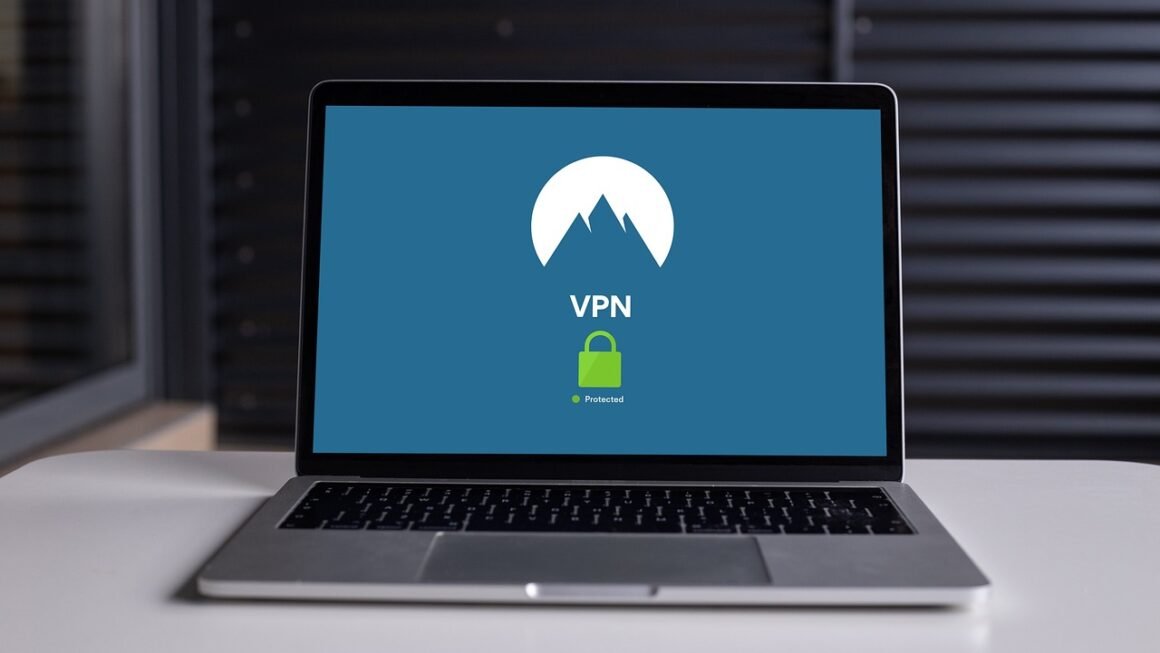Navigating the digital landscape requires vigilance, and one of the most significant threats lurking beneath the surface is the data breach. These incidents can have devastating consequences for businesses and individuals alike, leading to financial loss, reputational damage, and erosion of trust. Understanding the nature of data breaches, their causes, and preventative measures is crucial for safeguarding your sensitive information in today’s interconnected world.
Understanding Data Breaches
What is a Data Breach?
A data breach is a security incident in which sensitive, protected, or confidential data is copied, transmitted, viewed, stolen, or used by an individual unauthorized to do so. These breaches can range from the accidental loss of a laptop containing unencrypted customer data to sophisticated cyberattacks orchestrated by malicious actors.
- Examples:
A hacker gaining unauthorized access to a company’s database and stealing customer credit card information.
An employee accidentally emailing a spreadsheet containing sensitive employee data to an unauthorized recipient.
* A ransomware attack that encrypts a company’s data and demands payment for its release.
Different Types of Data Breaches
Data breaches can take many forms, each with its own set of characteristics and potential impact. Understanding these different types is key to developing effective security strategies.
- Hacking: Involves unauthorized access to systems, networks, or devices, often with the intent of stealing data or disrupting operations.
- Malware/Ransomware: Malicious software that can steal data, encrypt files, or gain control of systems. Ransomware specifically demands payment for the decryption of data.
- Phishing: Deceptive emails or messages designed to trick individuals into revealing sensitive information, such as passwords or credit card numbers.
- Insider Threats: Breaches caused by employees, contractors, or other individuals with authorized access to systems and data. This can be intentional or unintentional (e.g., accidental disclosure).
- Physical Theft: The physical loss or theft of devices containing sensitive data, such as laptops, smartphones, or hard drives.
- Unintentional Disclosure: Accidental exposure of data, such as posting sensitive information online without proper authorization or misconfiguring security settings.
Common Causes of Data Breaches
Weak Passwords and Security Practices
One of the most common and preventable causes of data breaches is the use of weak passwords and inadequate security practices. Easy-to-guess passwords, password reuse across multiple accounts, and a lack of multi-factor authentication can make it significantly easier for attackers to gain access to sensitive data.
- Example: Using “password123” or “123456” as a password.
- Example: Employees using the same password for their work email, personal email, and social media accounts.
- Tip: Enforce strong password policies, require regular password changes, and implement multi-factor authentication whenever possible.
Software Vulnerabilities and Outdated Systems
Software vulnerabilities are flaws or weaknesses in software code that can be exploited by attackers to gain unauthorized access or control of systems. Outdated systems often contain known vulnerabilities that have not been patched, making them prime targets for attackers.
- Example: The Equifax data breach in 2017 was caused by a vulnerability in the Apache Struts web framework, which had a patch available but was not applied to Equifax’s systems.
- Tip: Regularly update software and operating systems with the latest security patches. Implement a vulnerability management program to identify and remediate vulnerabilities in a timely manner.
Phishing and Social Engineering
Phishing and social engineering attacks rely on manipulating individuals into divulging sensitive information or performing actions that compromise security. These attacks often involve deceptive emails, websites, or phone calls that impersonate legitimate organizations or individuals.
- Example: An employee receives an email that appears to be from their bank, asking them to verify their account details by clicking on a link. The link leads to a fake website that steals their login credentials.
- Tip: Train employees to recognize phishing attempts and other social engineering tactics. Implement email filtering and security awareness programs.
Lack of Employee Training and Awareness
Employees are often the first line of defense against data breaches, but if they are not properly trained and aware of security risks, they can inadvertently expose sensitive data. A lack of awareness can lead to employees falling victim to phishing attacks, using weak passwords, or mishandling sensitive information.
- Tip: Conduct regular security awareness training for employees. Cover topics such as phishing, password security, data handling, and social engineering.
- Tip: Create a culture of security awareness within the organization, where employees are encouraged to report suspicious activity and ask questions.
Consequences of a Data Breach
Financial Losses
Data breaches can result in significant financial losses for businesses, including:
- Direct costs: Costs associated with investigating the breach, notifying affected individuals, providing credit monitoring services, and paying legal fees.
- Indirect costs: Loss of business due to reputational damage, customer churn, and regulatory fines.
- Example: The average cost of a data breach in 2023 was $4.45 million, according to IBM’s Cost of a Data Breach Report.
Reputational Damage
A data breach can severely damage a company’s reputation, leading to a loss of customer trust and confidence. Customers may be hesitant to do business with a company that has been breached, and negative publicity can spread quickly through social media and news outlets.
- Example: After the Target data breach in 2013, the company’s stock price declined, and it faced significant reputational damage.
Legal and Regulatory Penalties
Data breaches can trigger legal and regulatory penalties, including fines, lawsuits, and sanctions. Regulations such as GDPR (General Data Protection Regulation) and CCPA (California Consumer Privacy Act) impose strict requirements on organizations to protect personal data and notify affected individuals in the event of a breach.
- Example: Companies that violate GDPR can face fines of up to 4% of their annual global turnover or €20 million, whichever is higher.
Preventing Data Breaches: Best Practices
Implement Strong Security Measures
Implementing strong security measures is crucial for protecting sensitive data from unauthorized access. This includes:
- Firewalls: Protect networks from unauthorized access.
- Intrusion Detection and Prevention Systems (IDS/IPS): Monitor networks for malicious activity and block suspicious traffic.
- Antivirus and Anti-malware Software: Protect systems from malware and other threats.
- Encryption: Encrypt sensitive data at rest and in transit to protect it from unauthorized access.
- Access Controls: Implement strict access controls to limit access to sensitive data to authorized individuals only.
- Multi-Factor Authentication (MFA): Require multiple forms of authentication to access systems and data.
Regularly Update Software and Systems
Regularly updating software and systems with the latest security patches is essential for mitigating vulnerabilities. This includes:
- Operating Systems: Windows, macOS, Linux, etc.
- Applications: Web browsers, office suites, etc.
- Security Software: Antivirus, firewalls, etc.
- Third-Party Libraries and Frameworks: Regularly scan and update these components as vulnerabilities are frequently found in them.
Employee Training and Awareness Programs
Investing in employee training and awareness programs can significantly reduce the risk of data breaches. These programs should cover topics such as:
- Phishing Awareness: How to recognize and avoid phishing attacks.
- Password Security: Creating and maintaining strong passwords.
- Data Handling: Properly handling and storing sensitive data.
- Social Engineering: Recognizing and avoiding social engineering tactics.
- Incident Reporting: How to report suspicious activity.
Data Loss Prevention (DLP) Solutions
Data Loss Prevention (DLP) solutions can help prevent sensitive data from leaving the organization’s control. These solutions can:
- Monitor data in transit and at rest.
- Identify and block the transmission of sensitive data.
- Enforce data security policies.
- Example: DLP solutions can be configured to prevent employees from emailing sensitive documents to unauthorized recipients.
Responding to a Data Breach
Incident Response Plan
Having a well-defined incident response plan in place is crucial for effectively responding to a data breach. The plan should outline the steps to be taken in the event of a breach, including:
- Containment: Isolating the affected systems to prevent further damage.
- Eradication: Removing the malware or other threats that caused the breach.
- Recovery: Restoring systems and data to their original state.
- Notification: Notifying affected individuals and regulatory authorities.
- Post-Incident Activity: Analyzing the breach to identify the root cause and improve security measures.
Forensic Investigation
Conducting a forensic investigation is essential for determining the scope and cause of a data breach. This involves:
- Collecting and analyzing evidence.
- Identifying the systems and data that were compromised.
- Determining the attacker’s methods and motives.
- Identifying vulnerabilities that were exploited.
Legal and Regulatory Obligations
Organizations have legal and regulatory obligations to notify affected individuals and regulatory authorities in the event of a data breach. These obligations vary depending on the jurisdiction and the type of data that was compromised. It’s crucial to understand and comply with all applicable laws and regulations.
Conclusion
Data breaches pose a significant threat to businesses and individuals alike. By understanding the nature of data breaches, their causes, and the potential consequences, you can take proactive steps to protect your sensitive information. Implementing strong security measures, regularly updating software and systems, investing in employee training, and having a well-defined incident response plan are essential for mitigating the risk of data breaches and minimizing their impact. Staying informed and vigilant is key to navigating the ever-evolving threat landscape and safeguarding your digital assets.



